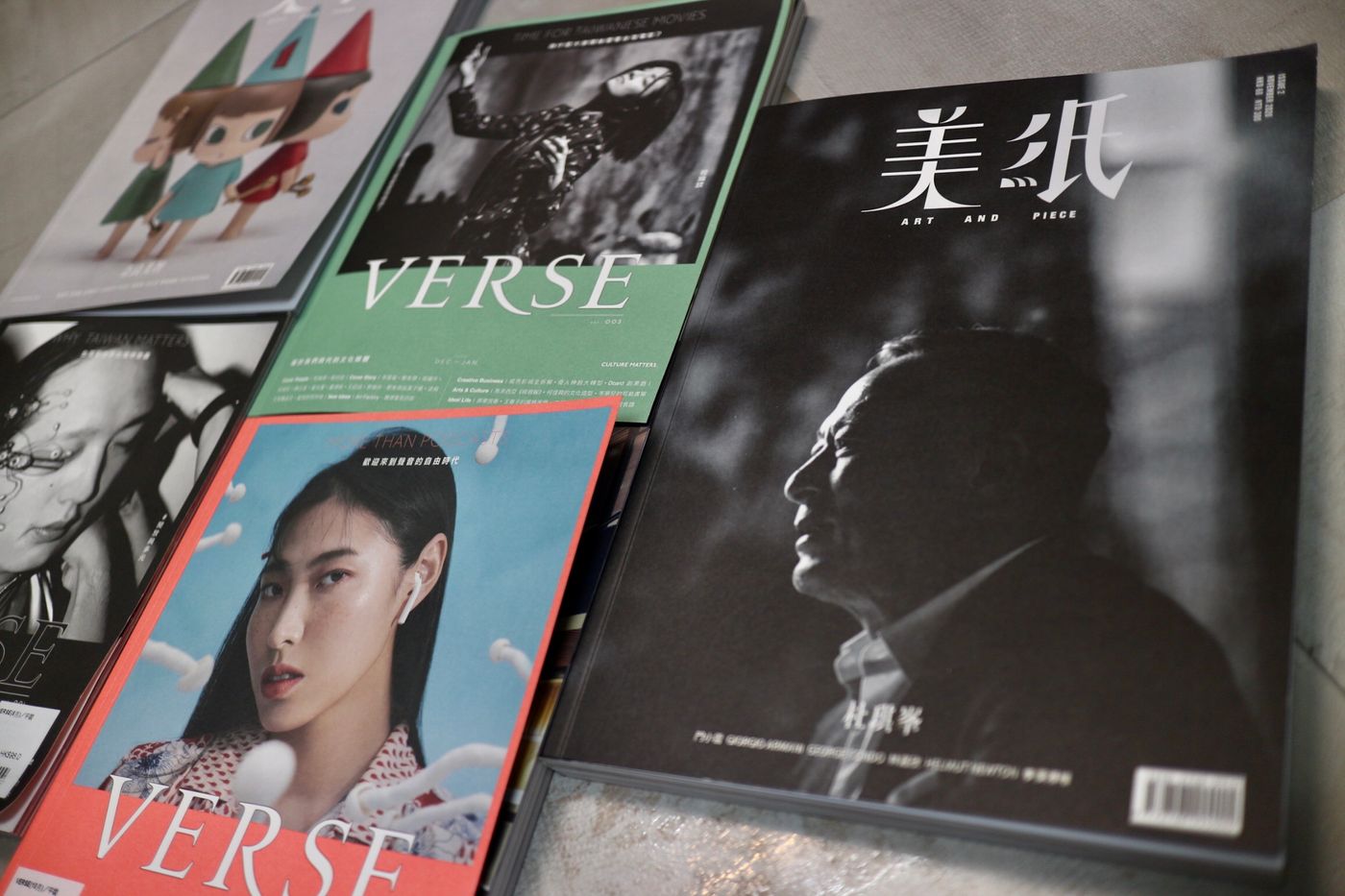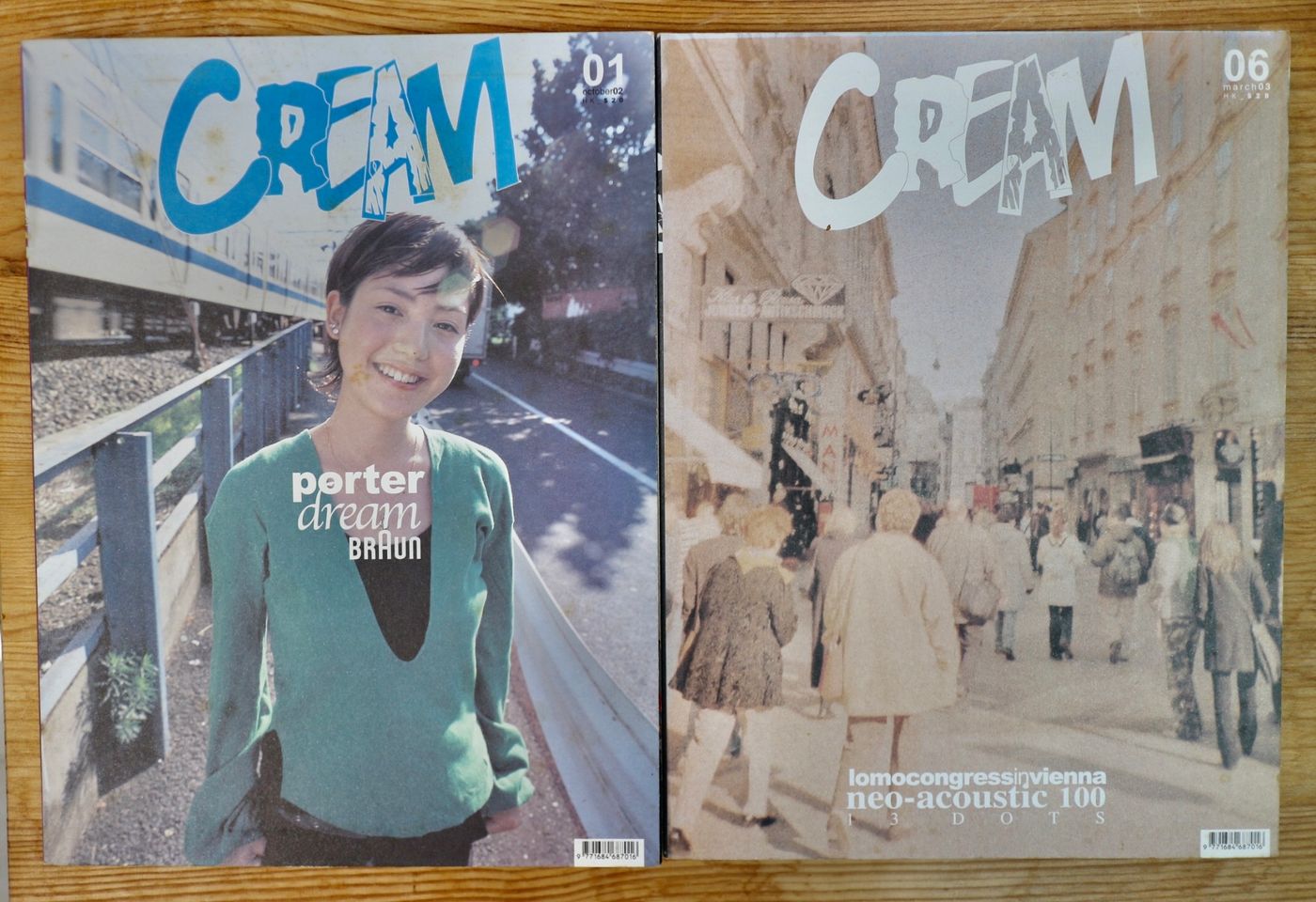
水月一(黃子翔),藝文記者,自由撰稿人,小說創作人,科幻/搖滾/另類文化愛好者,藏書人。合著有《谷之旅--在地圖消失處的探索旅程》。ig:@watermoonone.waterflow。 │medium.com/watermoonone│matters.news/@watermoonone│vocus.cc/user/@watermoonone
【Topic】Thinking from VERSE to the Multi-Cover Magazines of US Paper

In the second half of 2020 when the epidemic is raging, when everything needs to be shut down, we usher in the era of multi-cover magazines.
In August, Taiwan's "VERSE" was born; in September, Hong Kong's "American Paper" came out.
Interestingly, the two magazines were published in double-cover or even multi-cover mode by coincidence, which attracted a lot of topics. In the current (seemingly) cold winter of the paper media, it is not simple. some meaning and possibility.

"VERSE": Based on Taiwan and looking at the world
"VERSE" is led by Zhang Tiezhi, who was the editor-in-chief of Hong Kong's "Outside the Numbers", as the president and editor-in-chief. I had heard of him long before he directed "Outside the Numbers" for his 2004 book "Voice and Fury: Could Rock and Roll Change the World?" ", was one of the references for my dissertation and homework when I was taking the cultural studies course. After graduation, I still followed his later books "Rebel Gaze", "The Noise of the Times: From Dylan to U2 Protests". sound" and so on.
Zhang Tiezhi came to Hong Kong to serve as the editor-in-chief of "Outside the Number", which really surprised me. The themes such as "Young Power" in January 2013 and "Gay and Proud" in February were all eye-catching, and I still rewatch it now. Ironically, the cover characters of this issue of "Young Power" - Huang Zhifeng, Lin Langyan and Zhou Ting of the scholarly thought, have now become prisoners, which is inevitably embarrassing. I had a relationship with Zhang Tiezhi because of my work relationship. The meeting place was the office of "Outside the Number" (the only visit for the time being). Of course he didn't remember me.
Zhang Tiezhi stayed in "Outside the Number" for two years. He returned to Taiwan in 2015 and continued to be active in the local media. From the chief consultant of "Digital Times" to the president of "Fountain New Living Water" magazine, he also co-founded the online media "Reporter". Quite vocal.
Then there is "VERSE". He not only emphasizes the humanistic aspect in the magazine, but also injects public issues similar to the "Outside the Numbers" he is in charge of, providing a macro perspective, and it also has its own characteristics. For example, the themes of the first issue "Taiwan's Unique Significance to the World" and the third issue "Why Do People Start to Love Watching Taiwanese Movies?" all have a big picture based on Taiwan and looking at the world.

"Beautiful Paper": The Elegy of Hong Kong Magazine?
As for "American Paper", it was founded by Hong Kong senior magazine, media person and writer Jin Cheng. He is the founder and editor-in-chief of the famous magazine "JET". Maybe readers may not know that since January 2020, Jin Cheng has left Sing Tao Group and has found another fund to operate "JET" (however, the "JET" office is still located in Sing Tao Building), which is self-financing and independent operation. Unexpectedly, when the pressure of running a magazine was increasing, Jin Cheng opened up a new path. Last year, he resolutely founded "American Paper", which is very adventurous. But thinking about it carefully, leaving a big company and having no constraints may be a good time for Jin Cheng to start another magazine; not to mention that he started co-production with another famous magazine person, writer and even cartoonist Yue Ba Shi last year. 's YouTube show "Uncle's Love". It seems that Jin Cheng can't wait to accept the challenge.
The artistic and artistic orientation of "Meizhi" is deeper and deeper than the cultural and social orientation, which is what the name of "Meizhi" implies. "American Paper" interviewed active creators and artists at the time, like Yang Xuede (the first issue) and Steven Choi (the third issue) who held new exhibitions at that time, and there were also interviews and special collections of timeless "big men", such as "Du Sir" Johnnie To (the second issue), Yoshitomo Nara (the first issue), etc., also jumped on the cover to attract the attention of fans. Compared with "VERSE", which wins with cultural special reports, "American Paper" focuses more on the interviews of creators and the beauty of artworks published on paper, as well as independent introductions of artworks and paintings. Opening a magazine is like reading a collection of articles in the art and literature section of the zigzag - assuming that the newspaper now has an art and literature section.
Some people describe "American Paper" as "the elegy of a Hong Kong magazine", and Hong Kong readers may have mixed feelings after listening to it. In the era of chasing SEO and taking digital marketing as the king, are in-depth articles and texts published in the print media really still valuable? Where does the ad come from? In the end, don't you want to "disassemble" and move it online and incorporate it into the SEO system? Having worked in newspapers and magazines for more than ten years, I felt deeply touched and had a great crisis of confidence for a long time. However, the emergence of "American Paper" and even "VERSE" still makes me believe that there are still people who are serious about running the paper media well.

Get involved the moment you buy
Both "VERSE" and "American Paper" are published in multi-cover mode, which is also very popular. The first issue of "Beautiful Paper" released six covers of Yoshitomo Nara, Yang Xuede's paintings, Zhang Shuping, Zhang Shuping's drawings, Nagaba In the Mood for Love, and Kanazawa Shoko's calligraphy. Some of them are only available through online shopping channels, which can be regarded as special editions of special editions. The second issue of "American Paper" has five covers that are amazing. The third issue of "American Paper", which was just published at the time of writing, has four covers for the time being.
"VERSE" is not too much. The first issue features Tang Feng, Zheng Zonglong, and Peng Tianen as three covers, as well as Wang Ruolin and Ah Bao in the second issue, and Gui Lunmei and Liu Guanyan in the third issue.
Whether a new magazine will sell well is unpredictable and unpredictable, not to mention the fact that from the very beginning, the "big head" and the multi-cover model will increase the pressure on production and printing costs. For publishers, this move is not so much a risk as it is Experiment.
However, I have worked in magazines, publishing houses, and newspapers. As a reader of "VERSE" and "American Paper" with multi-cover systems, I definitely appreciate it. I also think that the greatest significance of multi-cover mode to readers is in this In the era of emphasis on interaction and experience, participate in it from the moment of purchase, because unless you plan to buy every cover (which is actually another option), if you only buy one, you must play this game - Choose a cover. Of course, if there is only one model left in the convenience store, in order to avoid being cornered, you can't lose the opportunity to buy a license, then it's another matter.
The process of choosing a cover is actually to reflect the reader's personal preference and pursuit of "beauty". You also have to dig through the aesthetics and experience of art appreciation accumulated over the years. In other words, choose and buy the cover that is most meaningful to you. This is what I believe in publishers, production teams, and what readers want to do, instead of just watching the passive information content of the media and paper media. And as simple as choosing a cover, it is already an aesthetic vote, an aesthetic statement.

Can not bypass the boutique dimension
For example, in the second issue of "Beautiful Paper", I bought the cover of Johnnie To without even thinking about it (and later added a cover of Xiaolei's paintings), because my favorite Hong Kong film director is Johnnie To, so I didn't choose him. . Another example is the third issue of "American Paper". This is the first time I saw it in the downstairs convenience store (I hope it's my luck, not because of slow sales), and there are also lined up with The Little Prince, Doraemon x Gucci, Okokume There are three covers for you to choose from, but unfortunately there is no Steven Choi x Little Prince cover that I most want to buy, and I finally choose to buy the Little Prince cover. In recent years, the trend of simplicity and fashion has become popular, and I have also been affected a lot. For comparison, the cover of The Little Prince is more pleasing to the eye.
It will be even more fun if you can talk about "Cover Selection" with your good friends. Why do you buy Lin Jiaxin, I will buy Men Xiaolei, and then share and discuss with each other; if everyone has the same cover in their hands, they can build on their shoulders and praise each other and have a taste (but they have similar smells). By being talked about, publications have topicality and life.
Multi-cover mode, there is also a limited number of arrogances, assuming that each issue is printed with 6,000 copies, and if the six covers are evenly distributed, that is, 1,000 copies per style, so they are obviously set in the same print frame, but added The rarity of magazines greatly increases readers' desire to buy, and even to snap up. Rare things are precious, and the paper media and publications in the new era seem to be unable to bypass the dimension of high-quality products. In addition, each cover is printed in small quantities, which may also increase the flexibility of future publications.
As for me, who bought several issues of "American Paper", I always wandered around convenience stores on the day of publication, nervously checking (and sometimes asking the clerk) whether the magazine had been delivered, and if I could only throw a punch When it was empty (or sold out early), it was inevitable to be disappointed, so I ran to another convenience store to try my luck - the last time I had this experience, probably back in the 1990s to early 2000s of "MCB". Isn't that the joy that this multi-cover magazine era has brought me?

Like my work?
Don't forget to support or like, so I know you are with me..
Comment…